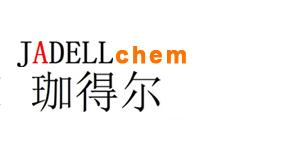Thymic stromal lymphopoietin (TSLP) 是一种上皮细胞衍生的细胞因子,过敏性炎症中有重要作用。
Synonyms
rHuTSLP; TSLP
Species
HumanSource
E. coli Accession
Q969D9 Gene ID
85480 Molecular Weight
Approximately 15.1 kDa AA Sequence
MYDFTNCDFE KIKAAYLSTI SKDLITYMSG TKSTEFNNTV SCSNRPHCLT EIQSLTFNPT AGCASLAKEM FAMKTKAALA IWCPGYSETQ INATQAMKKR RKRKVTTNKC LEQVSQLQGL WRRFNRPLLK QQ Biological Activity
The ED50 is <0.3 ng/mL as measured by murine BaF3 pro-B cells, corresponding to a specific activity of >3.3 × 106 units/mg. Appearance
Lyophilized powder. Formulation
Lyophilized after extensive dialysis against 20 mM PB, pH 7.4, 150 mM NaCl. Endotoxin Level
<1 EU/μg, determined by LAL method. Reconstitution
Reconstitute the lyophilized recombinant Human Thymic Stromal Lymphopoietin (rHuTSLP) to 0.1-1.0 mg/mL using sterile distilled water or aqueous buffer containing 0.1 % BSA. Storage & Stability
Lyophilized recombinant Human Thymic Stromal Lymphopoietin (rHuTSLP) is stored at -20°C. After reconstitution, it is stable at 4°C for 1 week or -20°C for longer. It is recommended to freeze aliquots at -20°C or -80°C for extended storage. Shipping
Room temperature in continental US; may vary elsewhere. Background
Thymic stromal lymphopoietin (TSLP) is an epithelial cell derived cytokine expressed in skin, gut, lungs and thymus. TSLP signals via TSLPR, a heterodimer of the IL-7 receptor alpha chain (IL-7Rα) and the TSLP receptor chain (TSLPR). Thymic stromal lymphopoietin exerts profound influence on the polarization of dendritic cells (DCs) to drive T helper (Th) 2 cytokine production. It also directly promotes T cell proliferation in response to T cell receptor (TCR) activation, and Th2 cytokine production. Thymic stromal lymphopoietin also supports B cell expansion and differentiation. Thymic stromal lymphopoietin further amplifies Th2 cytokine production by mast cells and NKT cells[1]. Multiple innate immune cells express the TSLPR and respond to TSLP. For example, Thymic stromal lymphopoietin can enhance cytokine production from mast cells, NKT cells and eosinophils. In addition, Thymic stromal lymphopoietin has very recently been shown to induce eosinophil extracellular traps (EETs), extrusions of mitochondrial DNA toxic granule molecules released in response to infection[2]. |



